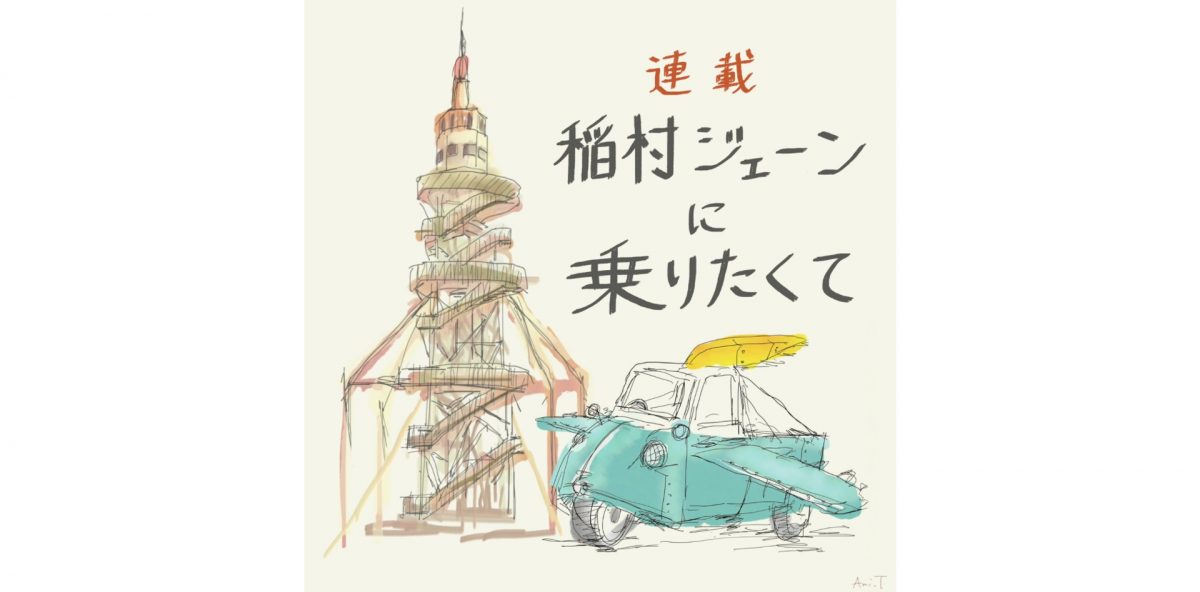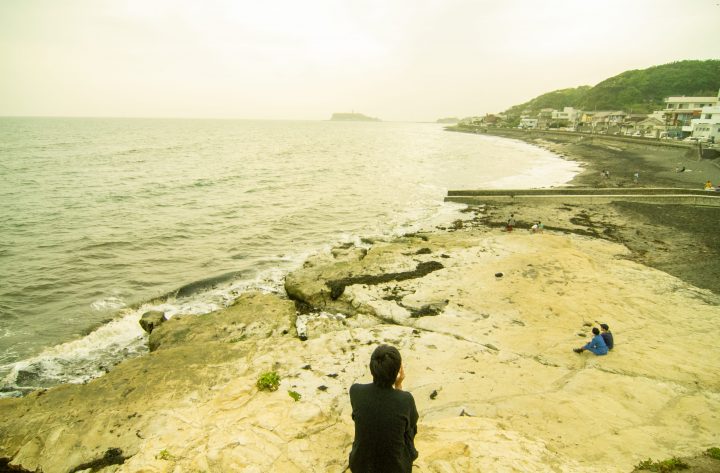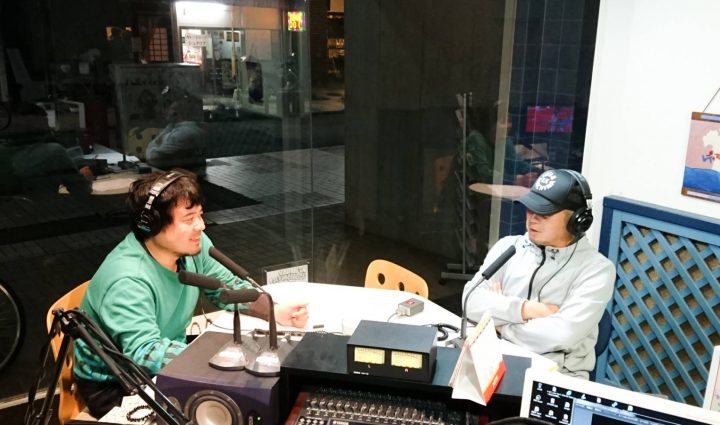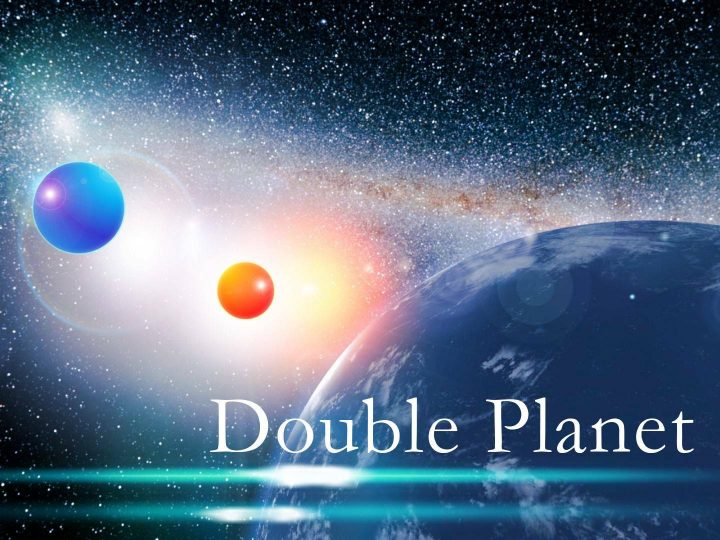[Serial] I Want to Ride Inamura Jane (1) - In Search of Keisuke Kuwata's "Summer" -

The film directed by Keisuke Kuwata is back! To celebrate, this series will be introducing how to enjoy this summer.
It is also a challenge to pursue "the original landscape of Shonan as seen by Kuwata."
Please enjoy this with a glass of cola in hand. (Author)
This is the Shonan Culture Research Lab at Chigasaki City Brandon University.
As a professor, I am conducting research that is not beneficial to the world or to people, focusing on Shonan's music culture and taking a dual approach of history and intellectual history.
The grading of summer exams had finished, and just as I was looking forward to finally enjoying this "Shonan summer" at my leisure... some shocking news came in.
"The big waves of that summer are back"
Ami : Professor, it's terrible to call me to the lab during summer vacation.
Oz : And what about that email? "It's a pine tree! It's a pine tree!"
Professor : I'm sorry, but I have a request to make of you all right now, this summer.
Ami : What is it, please?
Professor : Actually... I want to ride Jane.
Oz : Huh?
①30th Year Emotion
Professor : Were you able to go to the Chigasaki Film Festival*1?
Oz : Yes! We both managed to get tickets and were able to see it.
Professor : I see. It was the first time I was able to watch it on a big screen with loud sound.
Ami : The teacher was there too!
Professor : Yes, I was drawn in by the remastered footage. I didn't even notice the poster for "The Young Master of Hawaii" on VHS. I'm no longer fit to be a professor, so I've written my resignation.
Oz : Hey! Hold on a second.
Ami : Wow, Sensei, that's so emotional...
Professor : So, as your final assignment, I'd like you two to help me with this research this summer.
2 people : (gulp)
Professor : What on earth is "Inamura Jane"?
*1 On June 25, 2021, the 43rd anniversary of Southern All Stars' debut, the film was screened as a special invitational film to commemorate the 10th anniversary of the Chigasaki Film Festival.

[Research Notes]
On June 25, 1988, Southern All Stars celebrated their 10th anniversary with their 24th single, "Minna no Uta." This marked their first comeback in three years. Keisuke Kuwata's comments from around this time often centered around the theme of returning to their roots. His band activities, which he had been active in since his student days, had grown to the point where "it was too big for just the members to handle," suggesting that he was searching for a way of enjoying life that was in line with his life's work.
They loudly declared, "Three years ago, Southern All Stars were thought to have died, but we're here to show you that they're still alive and well with energy," while also saying, "However, we don't want to cling to the brand of the band Southern All Stars" (non-no, July 1988).
Ahead of this single and the summer tour "Great Resurrection," music critic Kenta Hagiwara, a friend of Kuwata's since college, said, "It seems that Kuwata now has a desire to return to his high school and college days, when he personally enjoyed music the most... The keyword is '70s pop'" (GORO, May 1988). For Kuwata, the '70s was his youth, and 1965, the time period in which Jane is set, was not yet in real time.
Here we can see one thing about Kuwata Keisuke's admiration for the 1960s. It was that era when The Beatles were around. Kuwata released his 27th single, "Furi Furi '65," the following year in 1989, and he said that the reason he likes 1965 is because it was the year The Beatles released their album "HELP," and he liked how John wore a straw hat in the album, which looked so natural.
For Kuwata, the divide between the 1960s and 1970s was huge. The 1970s began with the breakup of the Beatles, and as a junior high school student, he recalled, "My values were out of whack." These values were a shift from the previously seemingly wholesome world of pop music to songs about infidelity, with "infidelity...anything goes, and I felt like I was watching the world become a weird place" (Cosmopolitan, October 1988).
The era of student activism was long over, and it was no longer possible to be either a delinquent or an honor student. It was during this time at Aoyama Gakuin that Kuwata made his debut in 1978. Though he spent the hectic 1980s in the entertainment world, Kuwata preferred pop music and universal things. Something more innocent and simple was fine. In 1987, he went to New York with Hiroshi Matsuda, and upon being exposed to the purity of the musicians there, he commented, "That's why I think I felt that 'Katte ni Sindbad' was a pretty great pop song" (Esquire Japan, December 1987).
However, as a band, they always try to live in the present and continue to seek out new things. This is what Southern All Stars' 10th anniversary was all about. The effort and ambition to continue as a band.
First, Kuwata thought about a new "place" for music.
At the time, Amuse Cinema City, which was established as Amuse's film division, was running a series of films called "Amuse 10 Movies." It is well known that Masaharu Fukuyama passed the audition for this project in 1988 and joined Amuse (incidentally, Fukuyama also auditioned for "Inamura Jane"). Following this, talk of a film project involving Kuwata was presumably raised between 1987 and early 1988, following "Aiko 16 Years Old," starring Yasuko Tomita.
The first announcement to fans was not in a newsletter, TV, or radio, but during the MC at a live concert. It was the final performance of the aforementioned 1988 "Great Resurrection Festival," held at Yokohama Stadium on September 19th. As a gift to fans who had waited three years, the band announced, "We're going to make a movie with the best director in Japan!"

②Legendary Wave
Professor : So, it seems that initially your involvement with the film was envisioned as "music supervision."
Oz : Come to think of it, in 1989, your 25th single, "Love Song for the Goddesses (Beyond the Unreported Y-Shaped Space)," was also released as a video single.
Ami : The next single, "Sayonara Baby," is the theme song for the movie "When She Changes Into a Swimsuit"...
Professor : Yes, that means he elevated his music videos to become works of art and released them to the world, and he chose film as a new medium. At the time, he said, "I want to find a medium that will allow music to come to life" (Fm fan, April 1989).
Oz : Lately, it's more common to call it a music video (MV) rather than a promotional video (PV). This is definitely an MV...
Ami : You create the music yourself, produce the video, direct it, and even star in it...
Professor : Yes, it's the very definition of music culture in the current year of Reiwa 3. It's no different from what young artists do on their computers or smartphones. Kuwata and Southern All Stars realized this before anyone else.
Ami : I guess you could call it a cross-industry director? Nowadays it's common for comedians to make films. Kuwata-san has such a sharp sense of humor...
Professor : At the time, there were probably very few examples of successful film directors in other fields. The Heisei era began on January 8, 1989, and this year was truly the "first year of film."
Oz : So Kuwata decided to make a movie based on the legendary waves, set in his hometown of Shonan.
Professor : Yes, so you're coming face to face with the term "Shonan Sound" that you've always hated (laughs). Now, you've all seen the movie so I'm sure you know what it's about, but what do you think this "wave" represents?
Ami : The question is, what is "Jane"?
Oz : In the end, the "image" of this wave never really came out...
Professor : People often say that there are no surfing scenes in this movie, but that's not the point. Even the "wave" called "Jane" isn't clearly depicted. It's amazing.
Ami : Any hints?
Professor : In response to questions like these, he said, "It's something abstract, like sex between men and women, or like the waves of the times" (Bungeishunju, September 1990), and, assuming that there are pains in every era, whether it's the 1960s or the 1980s, he said, "Perhaps the 'waves of fantasy' are what relieve that stress" (GORO, February 1989), or even, "It's a symbol of catharsis" (SPA!, March 1989).
Oz : What is it?
Ami : Catharsis...
Professor : Oh, it's time for the "Akatombo" chime again today. Next time, let's think carefully about what "Jane" represents.
*This story is fiction.
Written by: Shaku Junsei (Chairman of Shonan Rock'n'Roll Center AGAIN, Buddhist scholar)
Born in 1989 at a temple in Chigasaki City. Specializes in Japanese Pure Land Buddhism and Japanese intellectual history. In commemoration of the 40th anniversary of Southern All Stars, Shinko Music published a book summarizing the Chigasaki sound culture of artists such as Keisuke Kuwata, Yuzo Kayama, Kunihiko Kase, and Kiyohiko Ozaki, entitled "Our Chigasaki Story: The Genesis of Japanese Pop Music, Chigasaki Sound History."
He currently serves as the main DJ for "Shonan Rock 'n' Roll Center RADIO" on Kamakura FM every Monday from 22:10.
Official site: https://www.srcagain.com/
Editorial Support:
Ami Tazaki
Daiki Ozawa
(Shonan Rock'n'Roll Center AGAIN Researcher)
I Want to Ride Inamura Jane (2) - In Search of Keisuke Kuwata's "Summer" - Click here
I Want to Ride Inamura Jane (3) - In Search of Keisuke Kuwata's "Summer" - Click here



